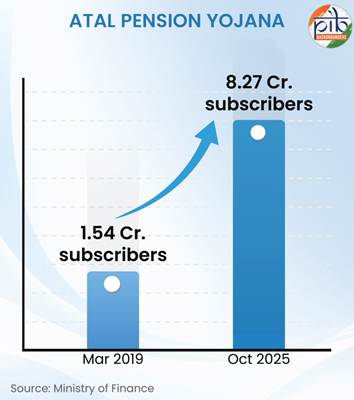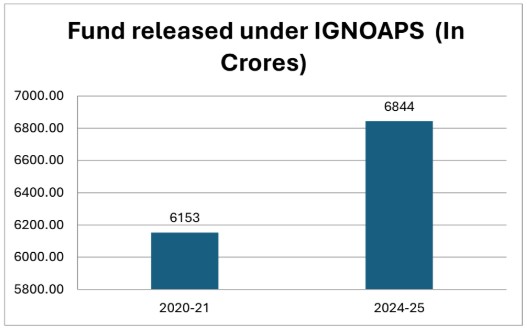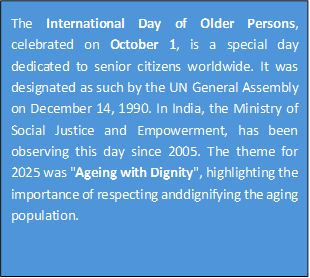Hey, have you noticed how more grandparents are around these days, sharing stories and wisdom? India is seeing a big shift in its people mix. The number of folks aged 60 and above is growing fast. Back in 2011, there were about 100 million seniors. By 2036, that figure will jump to 230 million. That means roughly one out of every seven people in the country will be in this age group. It is a huge change driven by better food, medical care, and longer lives overall.

Why This Growth Matters for Everyone
Longer lives are great news, but they come with new needs. Many older people need steady income, safe homes, and good doctors, especially if they are alone or short on money. Widows face extra tough times. The good part is that seniors can still add a lot to society. Think of them teaching skills, starting small businesses, or helping in community work. India is building a special economy around products and services for people over 50. It is called the silver economy, and it opens doors for jobs where experienced hands guide the way.
To make this work, we need family help, community events, money safety nets, and tech training. Things like health insurance for long care, online doctor visits, and easy gadgets can keep seniors active and happy.
How the Numbers Are Changing Across States
A report from 2020 on population guesses paints a clear picture. By 2036, 230 million seniors will reshape daily life in big ways. But this is not the same everywhere. South India, plus places like Himachal Pradesh and Punjab, already have more older residents. Kerala tops the list. In 2011, 13 percent of its people were seniors. By 2036, that will climb to 23 percent. It will feel like living in a developed nation with an aged crowd.
On the other hand, states up north and east, such as Uttar Pradesh, start with fewer seniors. There, the share was 7 percent in 2011 and will reach 12 percent by 2036. The gap between regions will grow wider. A big survey called LASI in 2021 looked deep into this. It found 12 percent of Indians are now seniors, heading to 319 million by 2050. That is a 3 percent yearly rise. Women outnumber men here, with 1,065 females for every 1,000 males. Over half the women are widows. For every 100 working adults, 62 depend on them, showing the load on families and the economy.

Everyday Struggles Seniors Face
Life is not always easy for older folks. Health issues top the list. Mental problems like memory loss get ignored too often. Disabilities creep in with age, and hospitals lack special sections for geriatric care. City people get better treatment than village ones. Money worries hit hard too. Not enough pension covers, costs for medicine and daily needs keep rising, and savings run low.
Families are changing. Kids move to cities for jobs, leaving parents behind. Loneliness sets in without company. Tech feels alien to many, with no simple training or devices. Roads, buses, and buildings forget ramps or handles. Emergency help lines rarely think of seniors first.
Government Steps to Make Life Better
The Ministry of Social Justice and Empowerment leads the charge for senior welfare. It teams up with finance, health, and state teams, plus NGOs and companies. Laws from 2007 and updates in 2019 make kids and relatives responsible for parent care. No more cap on support money; courts decide based on needs and incomes. Even step-kids and in-laws count now. Police stations get special officers for senior safety.
Key Programs in Action
One popular plan is Atal Pension Yojana. Started in 2015 for ages 18 to 40, it promises 1,000 to 5,000 rupees monthly after 60. The government fills any gap if investments fall short. By early October 2025, 8.27 crore people joined, with assets over 49,000 crore rupees.
Atal Vayo Abhyuday Yojana bundles many helps. It funds old age homes through IPSrC. Right now, 696 homes run in 29 states and UTs, giving free food, beds, care, and fun to poor seniors. Another 84 homes start this year.

Rashtriya Vayoshri Yojana hands out aids like walkers, hearing machines, and wheelchairs since 2017. Made by a government firm, they go to low-income seniors. Camps distribute them, or door delivery for those over 80.
A helpline at 14567 runs since 2021 for any senior worry. SAGE portal backs startups with up to 1 crore equity for elder care ideas. SACRED portal matches jobs for over-60s with companies.
Training turns people into skilled caregivers. In 2023-24, 32 centers taught 36,785 trainees. Ayushman Bharat now covers all 70-plus seniors with 5 lakh rupees yearly health shield. Over 40 lakh enrolled by January 2025.
Indira Gandhi pension gives 200 rupees monthly till 79, then 500, to poor seniors. More than 2.21 crore get it. NPHCE builds geriatric units in all districts for checkups and rehab.

Family, Tech, and Community Ties
Families still form the core support, but urban shifts weaken bonds. Laws push responsibility. Tech steps in big. e-Sanjeevani offers home doctor chats. Wearables track health and alert families. Online medicine delivery saves trips. Smart homes watch from afar.
A central portal lists all schemes and forms. Guidelines from 2019 push retirement homes. A new game, NAITIK PATAM, launched this year, brings kids and grandparents together over values.
The silver economy stands at 73,000 crore rupees in 2024 and will grow fast. Seniors hold the most wealth worldwide. Businesses can innovate in wellness and care.
To build a full system, team public and private efforts. Set rules for senior care, link ministries, and involve local bodies. This way, every elder lives with respect and ease.

Focused keyword: elderly in india
Meta description: Elderly in India will touch 230 million by 2036 amid health and money challenges. Schemes like AVYAY, PMJAY, and pensions provide vital aid. Discover full support details
